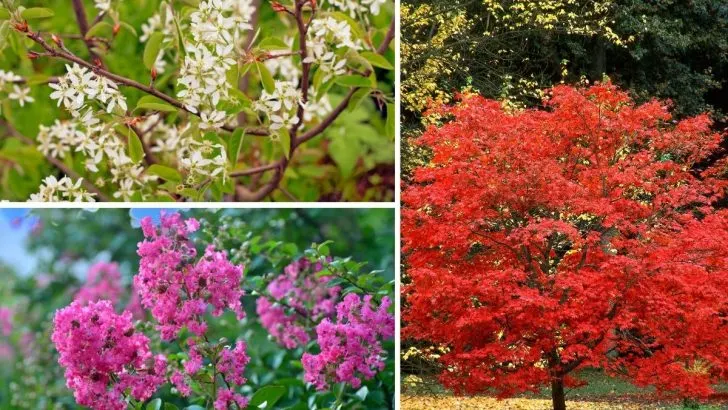If you’ve ever gazed wistfully at expansive gardens overflowing with majestic trees and vibrant blooms, know that you’re far from alone. However, reality often hands us smaller plots of land that require a bit more creative thinking.
Luckily, nature offers a delightful solution for those with limited space: dwarf flowering trees. These petite wonders bring all the beauty and charm of their larger counterparts, each uniquely tailored to thrive in a small garden setting.
Small space gardening doesn’t mean sacrificing beauty or diversity. In fact, it’s an opportunity to showcase a curated selection of stunning botanicals that serve double duty as both ornamental features and ecological powerhouses.
Dwarf flowering trees are perfect candidates for this role, offering a captivating display of flowers, foliage, and sometimes even fruit, without overshadowing the rest of your garden.
1. Crape Myrtle (Lagerstroemia indica)
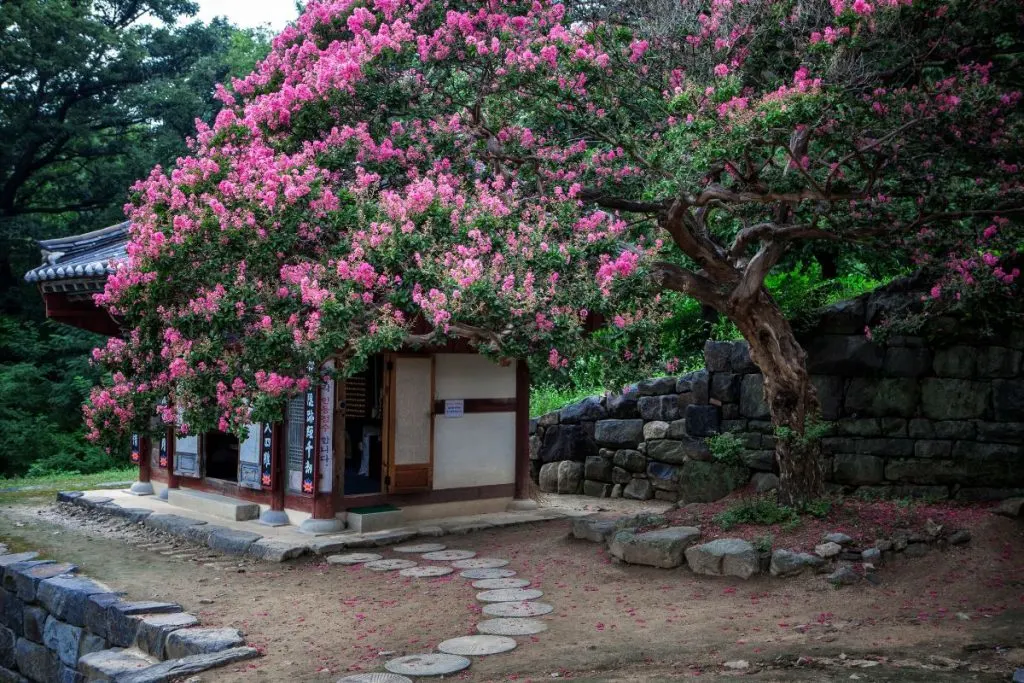
The crape myrtle is a favorite among small garden enthusiasts, and for good reason. Known for its stunning summer blooms and attractive bark, this drought-tolerant beauty is a versatile addition to any garden.
Crape myrtles are available in various dwarf varieties, making them ideal for container planting or fitting perfectly into a tight garden corner.
With colors ranging from vibrant pinks to pure whites, there’s a crape myrtle to complement any garden palette.
Aside from their blooms, their peeling bark provides winter interest, proving that these trees offer year-round appeal. Ensure they are planted in a sunny spot, and you’ll be rewarded with a spectacular floral display year after year.
2. Japanese Maple (Acer palmatum)

Japanese maples are celebrated for their delicate, lacy leaves that offer a show-stopping spectacle of color every autumn.
These trees might be small, but they pack a punch in terms of visual impact. Dwarf varieties, such as the ‘Red Dragon’ or ‘Koto-no-ito’, are particularly suited to small gardens due to their compact size and manageable growth habit.
Beyond their foliage, Japanese maples are also incredibly versatile. They thrive in containers and can easily be shaped through pruning, allowing for a customized look that fits your specific aesthetic.
Whether as a focal point or a complementary feature, they are sure to bring a touch of elegance to your garden design.
3. Serviceberry (Amelanchier)
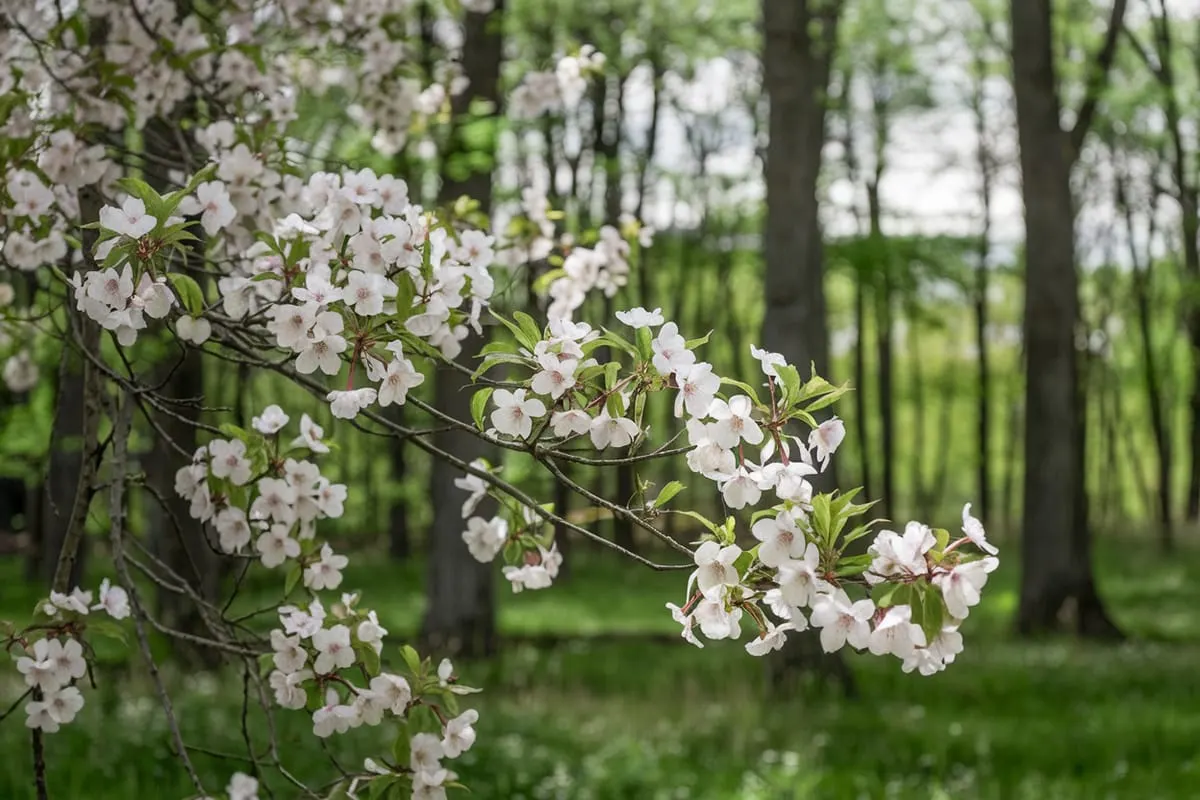
Don’t let its unassuming name fool you; the serviceberry is a powerhouse of beauty and utility. These trees offer clusters of white blossoms in the spring, followed by vibrant fall foliage and delicious berries that wildlife adore. Dwarf varieties allow you to capture all these benefits in a smaller package.
Serviceberries are perfect for those looking to add a multi-seasonal interest to their garden. They flourish in both sun and partial shade, making them adaptable to a range of garden environments.
The berries are not only a treat for birds but can also be used in jams and desserts, adding a flavorful benefit to their ornamental appeal.
4. Star Magnolia (Magnolia stellata)

The star magnolia is like a seasonal firework display, with its large, star-shaped flowers that burst onto the scene in early spring. Dwarf varieties of this magnolia provide all the grandeur without the sprawling size, ideal for intimate garden spaces.
Star magnolias prefer a spot with full sun to partial shade and need protection from harsh winds to keep their delicate blooms intact.
The flowers open before the leaves unfurl, offering a striking spectacle that heralds the start of the gardening season. Pair them with early spring bulbs for a stunning layered effect.
5. Redbud (Cercis canadensis)
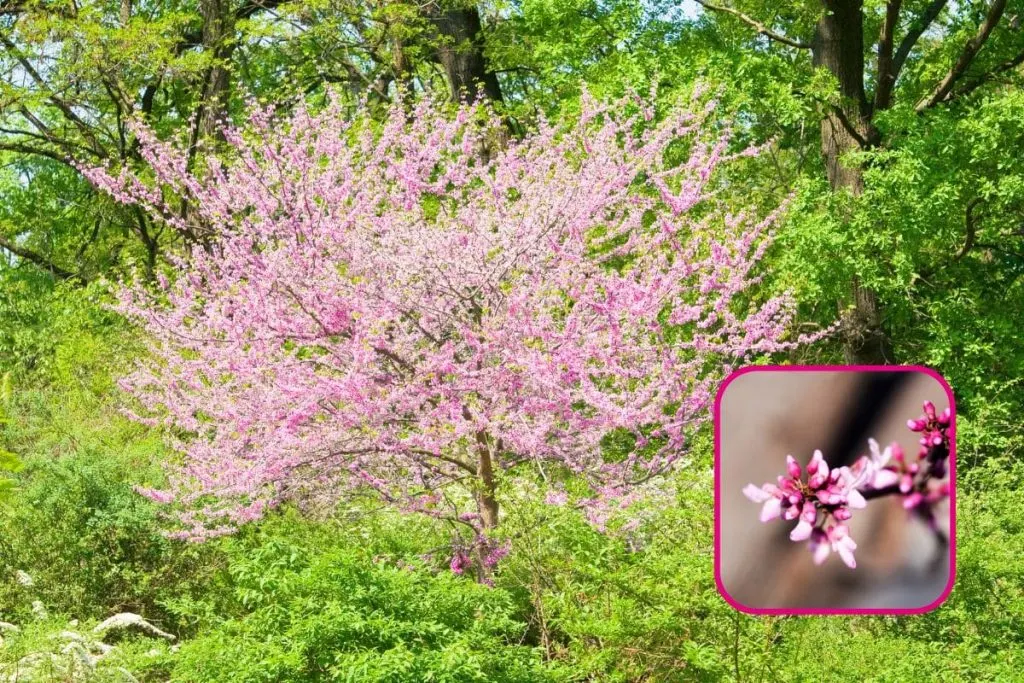
Redbuds are cherished for their profuse spring blooms that cling directly to the branches, creating a fairy-tale-like effect. Dwarf cultivars, such as ‘Ruby Falls’ or ‘Ace of Hearts’, offer the same vibrant display without overwhelming smaller garden settings.
These trees are not just for show; they provide essential early-season nectar for pollinators, making them an excellent choice for eco-conscious gardeners.
Redbuds thrive in well-drained soils and a sunny location, and their heart-shaped leaves keep the charm going long after the blossoms have faded.
6. Camellia (Camellia japonica)
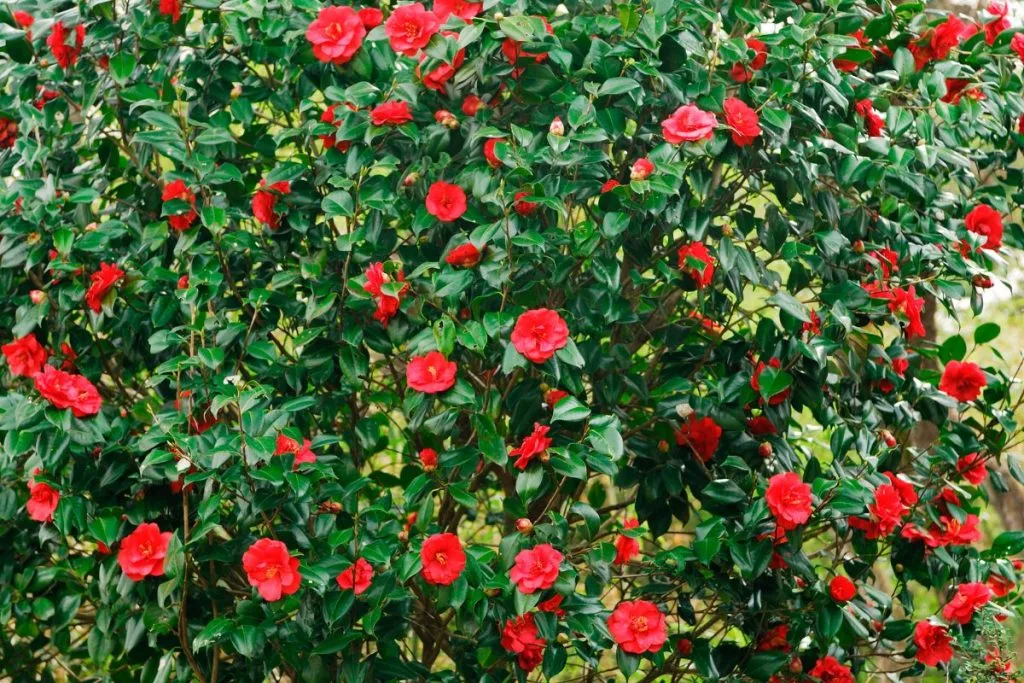
Camellias are known for their glossy evergreen leaves and exquisite blooms that add elegance to any garden. Dwarf varieties of camellias can be used as foundation plantings or even as a luxurious hedge in a limited space.
These trees prefer well-drained, slightly acidic soil and dappled sunlight, making them perfect companions for woodland gardens.
Their flowers, which can bloom from fall through spring depending on the variety, provide a pop of color during the seasons when most plants are dormant.
Final Thoughts on Dwarf Trees for Small Gardens
Exploring the world of dwarf flowering trees opens up a realm of possibilities for any small garden. Each of the trees mentioned brings its own unique touch of elegance, beauty, and utility, proving that garden size is no barrier to creating a stunning outdoor space.
Whether you select one standout species or create a tapestry of different trees, your small garden can become a vibrant, dynamic retreat.
Consider your climate, soil type, and aesthetic preferences as you plan your garden. And remember, a little careful planning can transform your available space into a thing of beauty, joy, and environmental benefit.

